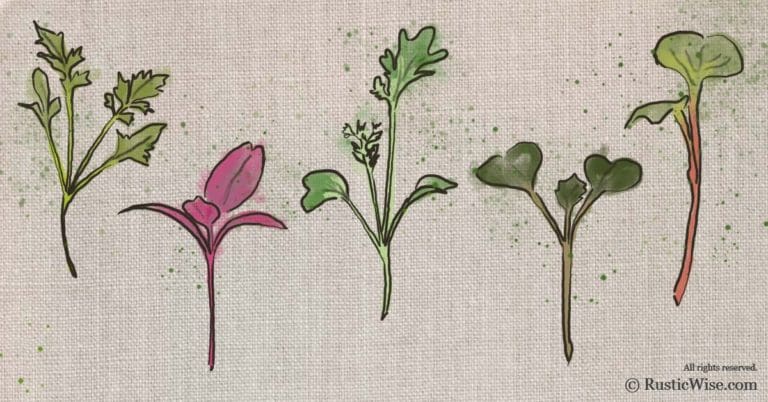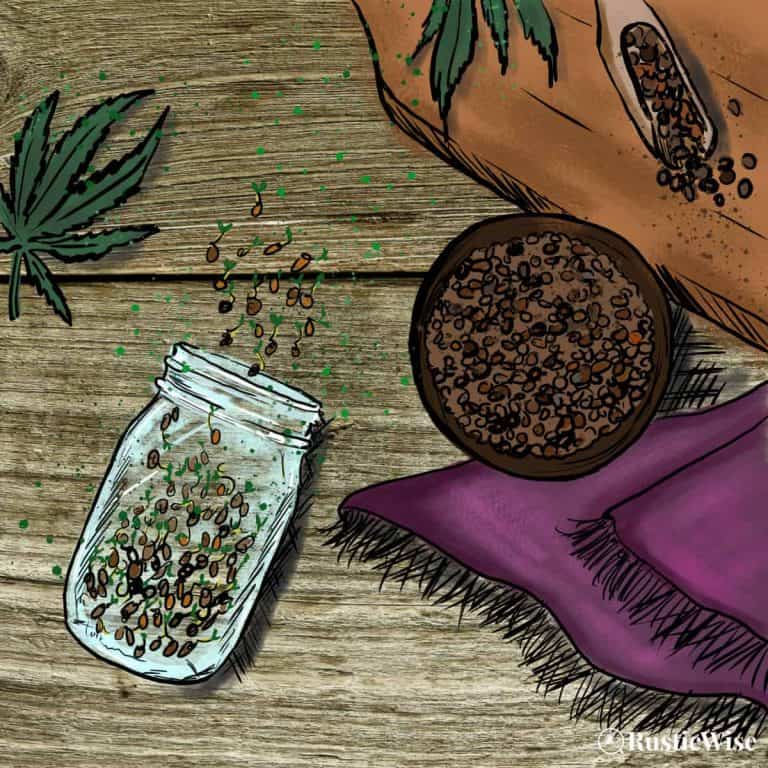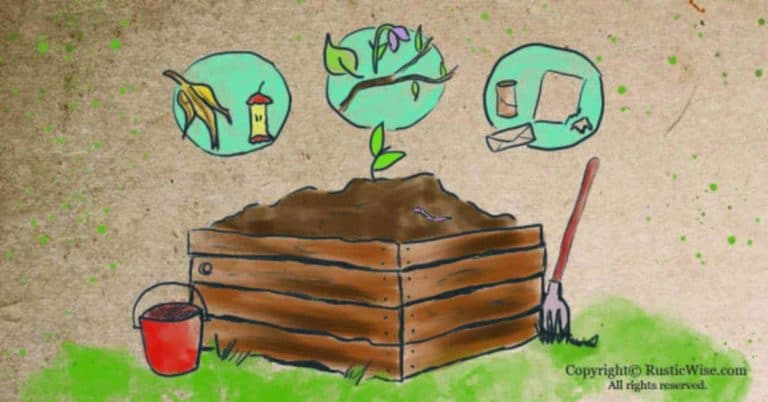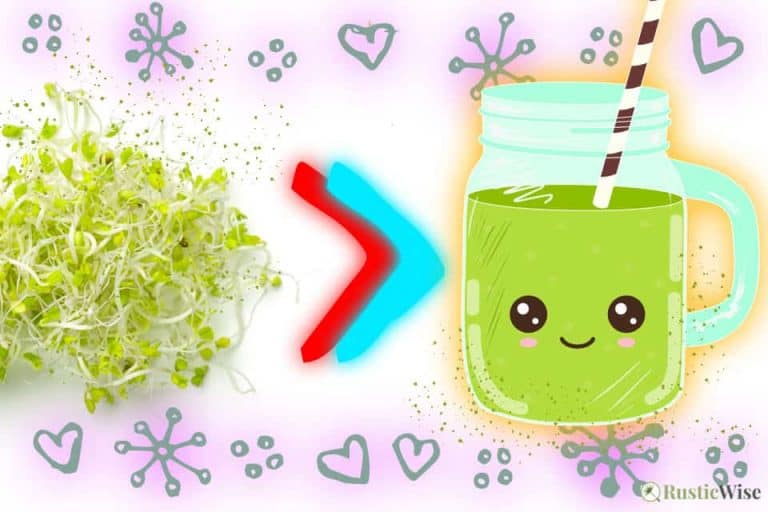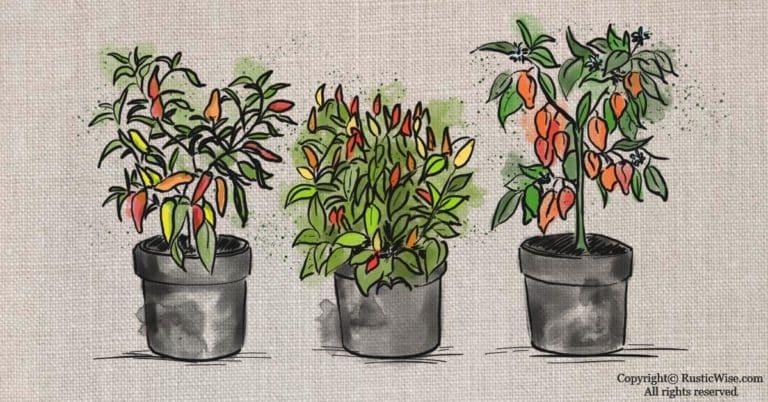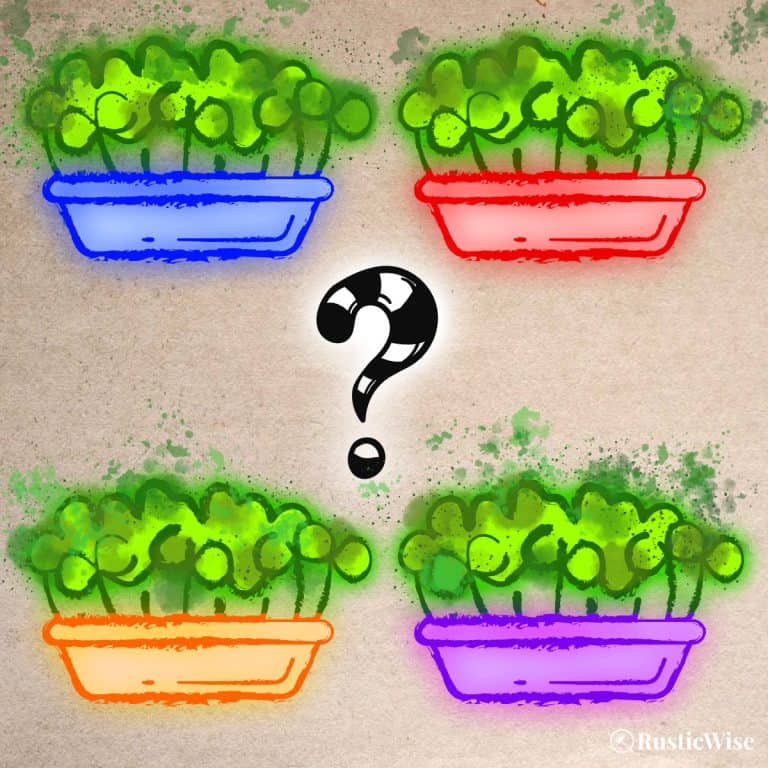Can You Compost Moldy Food? Tips for Handling Moldy Foods Safely
Molds are visible and invisible fungi that grow on many types of food. If you’ve let your food sit for too long, you may be wondering, can you compost moldy food? The short answer is, yes, moldy fruits and vegetables can be added to a backyard compost. If you have a worm bin, you can feed your red wigglers a small amount of moldy fruits, vegetables, and starches. The purpose of a compost is to break down organic matter into a rich soil amendment—moldy foods just have a head start!
Mold spores are in the air all around us, and they attach themselves to anything with a surface. Mold can be a tricky thing to deal with. It’s everywhere! But is all mold bad? Can you compost moldy food and then use it in your garden?
We’ll discuss the science behind molds on foods, safety tips when handling moldy foods, and whether or not you can add them back into your compost pile or worm compost bins. Let’s get started!
What exactly is mold?
Mold is a type of fungus which spreads from spores of mature strains. Believe it or not, mold is around us: in the air and in the environment.
When mold spores find a favorable environment, they latch on and begin to grow. In order for mold spores to take root, they need:
- The right temperature—generally this is somewhere between 131 and 158 degrees Fahrenheit (55 to 70 degrees Celsius);
- Water or humidity;
- Favorable air conditions; and,
- Food or nutrients.
Mold likes moisture and warmth indoors; when outdoors, mold can thrive in cool, damp areas, like under shady trees with plenty of vegetation. And of course, mold can grow inside a refrigerator on foods, and inside botched home canned foods.
Mold has a threadlike root system that develops beneath the surface of foods. Once this root system grows, “stalks” or the visible moldy portion of food begin to grow on the surface. Once these stalks mature, they spread spores.
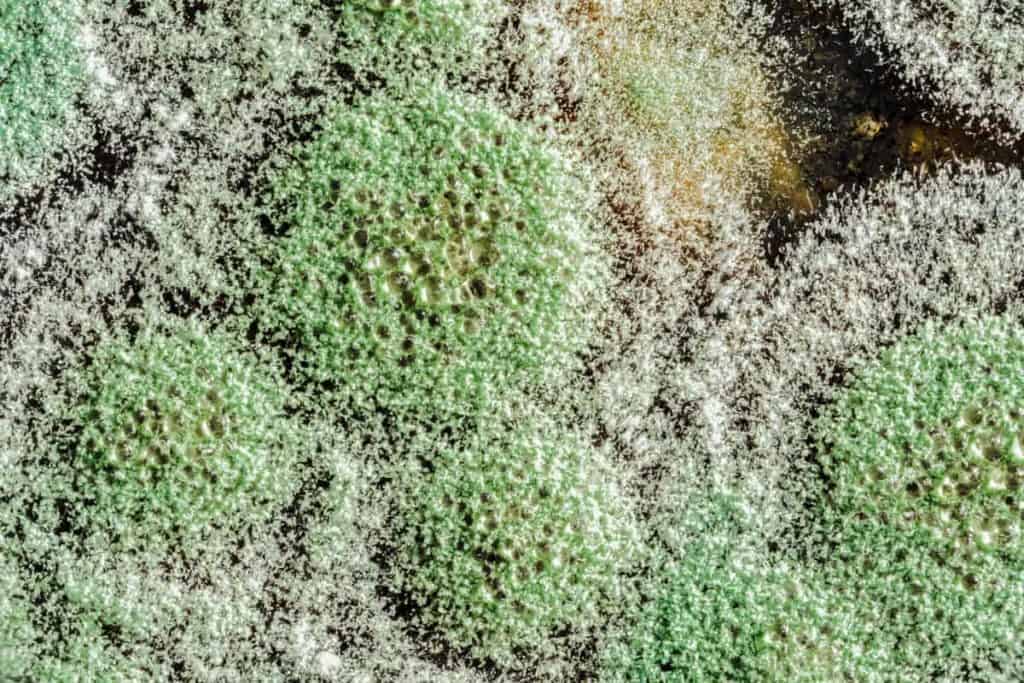
Credit: Yay Images
How does mold affect food?
If you see a moldy strawberry or tomato, it’s not enough to simply cut off the visible surface mold. There’s a below-the-surface network of mold that has likely spread throughout the fruit.
So, if you see a moldy “soft” fruit or vegetable, you’ll probably need to toss it (or compost it!). Moldy bread is also not safe to eat for the same reason.
The exception to this rule are “hard” foods such as harder cheeses, meats, and vegetables such as cabbage. You can safely cut off the moldy section and salvage the rest. Just remember to leave a 1 inch border (2.5 centimeter) around the moldy area.
Are molds harmful?
Yes, some molds are harmful if ingested or inhaled. Some people may suffer from adverse allergic reactions.
The U.S. Department of Agriculture (USDA) says that while many types of molds are harmless, when the right conditions are met, some produce a harmful substance called mycotoxins.
The Food and Agriculture Organization (FAO) estimates about 25 percent of the world’s crops are affected by mycotoxins.
Are all molds bad?
No, some types of mold are harmless and beneficial. If you’re a fan of blue cheese, Penicillium roqueforti is the strain of mold used to create this. Some cheeses such as Brie and Camembert have white mold covering the surface.
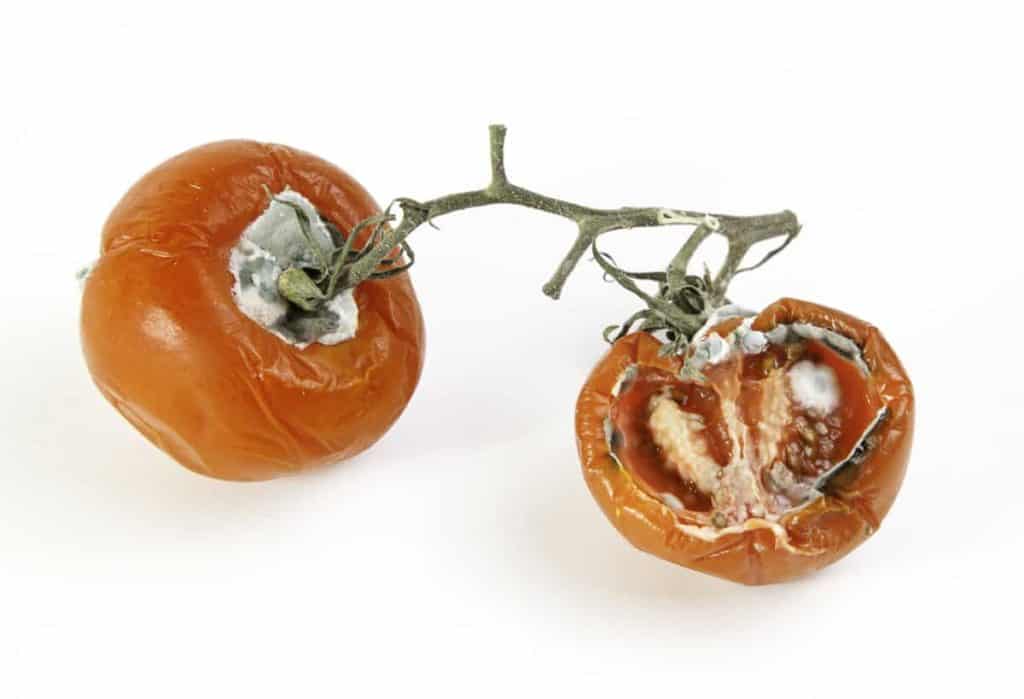
What types of moldy foods can be added to a compost?
According to Oregon State University’s Extension Service, adding moldy foods such as veggie scraps to a compost is perfectly safe.
Molds can vary in color from white, green, orange, pink, red, blue, and black. The color of the mold develops from the spores.
The most common types of mold on spoiled foods are the white fuzzy variety that grows on moist fruits and veggies, the green variety that grows on stale loaves of bread, and the pinkish-red variety that grows on dairy and meat products.
Generally speaking, all plant-based foods that come from the earth can be added to a backyard composting bin. This includes their moldy variations too:
- Fruit cores, rinds, peels
- Vegetable peels and rinds
- Potatoes
- Bread (there are some special tips when composting bread in general—read up about how to compost bread).
Don’t add moldy meat, dairy, fatty or oily foods. You’re not normally supposed to add animals-based products to an average compost pile, and adding moldy versions of these are generally not a good idea. This is sure to attract pests and rodents, and cause a strong odor.
How to safely add moldy foods to compost
As mold is a type of fungus, and fungi (along with bacteria and insects) are the main decomposers in a compost, it’s safe to put moldy plant-based food waste into a compost bin.
Moldy foods are just further along in the decomposition process.
Here are a few tips on incorporating moldy foods to a compost pile or bin.
1) Break into small pieces
Some people have recommended putting moldy foods into a blender or food processor to make a slurry. I don’t think this is necessary.
For one, we are the type of composters that lean toward the lazy side—this seems like unnecessary work. Second, I don’t like the idea of moldy food touching my blender or food processor. But, to each their own!
I do recommend, however, breaking all foods (moldy or not) into smaller pieces, either by cutting, or taking it outside and breaking it up with a stick. Bigger pieces take a long time to decompose and slow down the overall compost process.
(I once threw in a few whole moldy potatoes, and it took ages to break down!)
2) Dig a hole in the middle
It’s a good idea to place moldy food scraps in the center of your compost pile. Dig a hole several inches deep and dump in the moldy food.
The middle of a compost is where all the action takes place. Temperature rises and activity from bacteria, mold, and other decomposers is at its highest.
Placing in the middle also ensures that the food will be broken down to a more manageable size by the time it reaches the outside of your compost pile. This results in quicker decomposition rates.
3) Cover it up with carbon-rich materials
Food scraps are a “green” compost ingredient that’s packed with nitrogen. In order for a compost to thrive, it needs a healthy balanced diet of both green materials, and brown materials which are rich in carbon.
A few examples of brown compost ingredients are dry leaves, shredded newspapers, and small twigs which provide a nice balance with the nitrogen content of moldy types of foods. Bury your moldy food scraps with these materials to create a favorable environment for the microorganisms in your compost.
This will also help to mask any smells from the compost heap!
4) Don’t forget to turn it and keep it moist
Turning or mixing your compost regularly helps aerate the pile—compost decomposers need oxygen to thrive.
Mixing your compost pile also helps to break up any large chunks of food. Ensure you keep the compost pile moist; it should have the consistency of a damp sponge.
Can you add moldy foods to a vermicompost?
If you have a worm bin, you probably know that it requires a bit of a delicate touch to maintain the right pH levels. The red wigglers used in worm composting are much more sensitive to what you throw into their enclosed environment than the decomposers in a backyard compost.
There is some conflicting information out there about whether it’s safe to feed red wigglers moldy food. Some say moldy fruits are okay, while others say some molds on vegetables and bread may harm worms.
However, according to the University of California, it’s okay to add moldy foods in moderation when worm composting. [ see PDF http://ceyolo.ucdavis.edu/files/145449.pdf ]
Keep it plant or grain-based: moldy fruit, vegetables, starches, and bread.
Avoid feeding them animal-based products such as meat, dairy (moldy cheese), and overly spicy or oily foods.
Most red wigglers actually prefer to eat foods that are on the slimier side, and moldy foods to red wigglers are simply slimy food.
Other factors to consider are the size of your worm bin, and how many active red wigglers there are. If you feed too much moldy food and the worms aren’t able to eat it fast enough, mold spores may grow and spread within your worm bin.
If you find your worm bin is too moist (which creates a favorable environment for mold growth), add some more bedding or dry materials.
Tip: Moldy or rotten food has lost most of its nutrients. Make moldy foods a small part of your red wigglers’ diet to ensure they still get plenty of nutrients. Stay on the side of caution, and only feed the worms a little bit of moldy food at a time.
Safety tips on handling moldy foods and compost
Now that we know a bit more about mold, it’s important to handle moldy foods safely.
- Avoid shaking the food: This may cause mold spores to disburse within the environment. Place any moldy foods in a paper bag, or enclosed container and bring to your compost.
- Clean the area: Now that we know that mold is everywhere, you want to ensure you remove the moldy food, and clean the area surrounding it. This helps to prevent mold spores from spreading.
- Don’t inhale: While you may be tempted to do a quick “sniff” test to check if food has gone bad, avoid doing so if you see visible mold. This is because mold spores can be dangerous to your respiratory system.
Learn from this real-life tragic story of a forty-something British man. He died as a result of opening moldy compost bags of rotting plant and other organic waste materials. He suffered from an allergic reaction to Aspergillus fumigatus spores, but was otherwise healthy.
Tip: Wear a mask and gloves when working with compost if you have respiratory issues, allergies, or a compromised immune system.
The takeaway: can you compost moldy food?
If you’re wondering whether or not it’s safe to compost moldy food, the short answer is yes. You can safely add moldy plant-based foods to a compost pile, but avoid any moldy meat or dairy products. The red wigglers in a worm bin can also handle moldy foods such as fruits, vegetables, starches, and bread in moderate amounts.
Take care not to inhale moldy foods as mold spores may cause respiratory irritation. Mold is a type of fungus and fungi plays an important role as a decomposer in compost.
The purpose of a compost pile is to break down organic matter into rich soil—adding moldy foods which already contain some fungus contributes to the cause!
Related questions
Can you compost moldy coffee grounds?
Yes, moldy coffee grounds are fine for both a backyard compost and a vermicompost. Rich in nitrogen, coffee grounds are considered a “green” compost ingredient. Balance out the moist, nitrogen-rich properties of moldy coffee grounds with dry, carbon-rich materials such as dry leaves, or shredded newspapers.
What can I do with my leftover tea leaves?
Tea leaves would be a great addition to a compost pile as it contains nitrogen and other trace minerals. If you don’t have a compost pile, you could also incorporate tea leaves into the soil of potted plants or your garden as added fertilizer.
👉 If you like this post, see our complete Composting Collection.
Would you like more timeless tips via email?
Fun tips to help you live an independent, self-sustaining lifestyle. Opt-out at any time.


References:
- Farrelly, Lauren (13 March 2018). “How Does Mold Grow on Food?“, Sciencing. Accessed June 2021.
- U.S. Department of Agriculture (USDA), Molds on Food: Are They Dangerous?, https://www.fsis.usda.gov/food-safety/safe-food-handling-and-preparation/food-safety-basics/molds-food-are-they-dangerous. Accessed June 2021.
- Oregon State University’s Extension Service, Composting moldy food scraps? Go ahead, say OSU gardening experts, https://www.oregonlive.com/hg/2015/07/composting_moldy_food_scraps.html. Accessed June 2021.
- University of California, Composting with Worms: Let Worms Eat Your Garbage, http://ceyolo.ucdavis.edu/files/145449.pdf. Accessed June 2021.
- Adetunji, Jo (13 June 2008). “Man dies after inhaling fungal spores from garden compost,” The Guardian. Accessed June 2021.

Author: Josh Tesolin
Josh is co-founder of RusticWise. When he’s not tinkering in the garden, or fixing something around the house, you can find him working on a vast array of random side projects.


